 |
 |
|
|||||||||||||||||||||||
|
San Antonio Valley |
 |
||||||||||||||||||||||||
|
Of all Spanish California missions, San Antonio de Padua is the most faithfully restored. This is what a mission really looked like. Artifacts of the missionaries and their neophyte’s are on display. Frescoes of their daily life, and the painstaking restoration of the mission’s workings make it a valuable and educational museum. All that’s really different here from the old days is the Indians … But, they are coming back. |
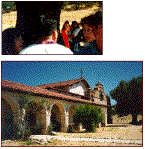 |
In 1771 Spaniards created the archetypal California Mission amidst 20 Salinan Indian villages. Founded by Father Serra, the Mission San Antonio de Padua was relocated a couple miles to the confluence of San Miguel and San Antonio Rivers. They thought it would be a good place for a winery. |
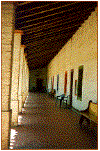 |
|||
Isolated from population, the mission appears pristine. Also, it has been protected, so that it appears even more as it may really have been 200 years ago. |
|||||
|
|||||
Mission San Antonio produced wine, flour, leather, and everything else to support a population of several thousand souls. |
|
||||

|
The Spaniards, who liked the site for wine making because of its soil and climate, were right on the money. 200 years of alternative use prevented wine grape growing in the immediate vicinity. But Swss Italian farming families throughout the Salinas Valley grew wine grapes in near perfect conditions. Today several of the world’s greatest wine appellations straddle the mission. |
|
|||
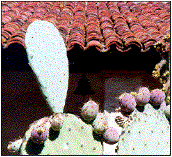 |
|
||||
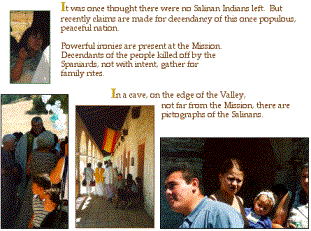
Salinans thrived in the San Antonio Valley. They conducted agriculture, traded commercially with coastal tribes and populations in the Central Valley. This valley was the heart of their homeland, which ranged from Carmel Valley to Morro Bay. Salinans conducted a sophisticated religious life, as evidenced by the Painted Cave. At the entrance to the cave (bottom left photo) there appears to be a solstice niche in the overhang. In pictograph scenes the observer can detect a peaceful people, who were agronomists. There were 2,000 to 3,000 Salinas in permanent residence in the San Antonio Valley until the Spaniards' European ways took their toll. Effects of their lives in the Valley go back 2,000 years. Until very recently, it was thought there were no remaining Salinans. However, there is a strong Salinan cultural consciousness emerging, and they are industriously recovering their culture.
A ghost story by Salinan writer Debra KrollSalinan artifacts in the Valley go back 2,000 years. Until very recently, it was thought there were no remaining Salinas. However, there is an emerging Salinan cultural consciousness, and evidence of living legacy. PelicanNetwork is keeping abreast of developments in the attempts by Salinan leaders to keep their culture alive and their sacred sites preserved.




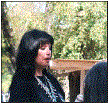
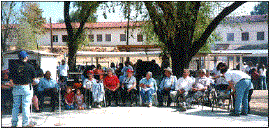
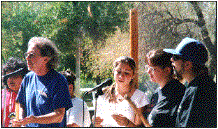


 Peafowl and Yellowbill Magpies have a very purposeful presence at the Mission
these days. Relics testify to the vast industry that once was here.
Peafowl and Yellowbill Magpies have a very purposeful presence at the Mission
these days. Relics testify to the vast industry that once was here.
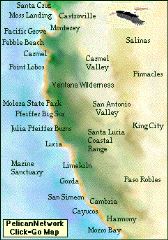
 PelicanNetwork
is a cultural and natural history information advocacy
and
PelicanNetwork
is a cultural and natural history information advocacy
and